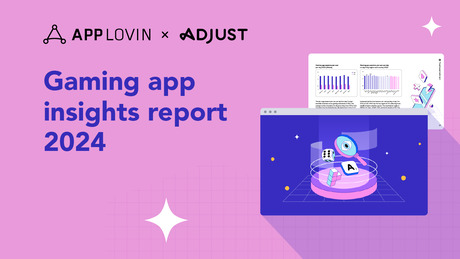Take your monetization to the next level
Maximize revenue, reduce costs, and save time with MAX
Start earning moreMAXIMIZE REVENUE
ANALYZE & OPTIMIZE
SAVE TIME
PROTECT YOUR BRAND
Increase ad revenue
Earn more for your ad inventory with an integrated 360º approach
Unified Auction
Drive the highest yield for your app real estate
Choose the mediation platform with more bidders, more networks, premium AppLovin demand, and custom options for anyone else you work with.
25+
SDK Networks
20+
in-app bidders including premium AppLovin demand
100+
DSPs bidding through the AppLovin Exchange
Unlimited
number of custom campaigns and networks
AD FORMATS
Expand your revenue opportunities
Leverage all major ad formats for more ways to drive in-app ad revenue, as well as innovative ad placements like app open and lock screen ads.
- Native
- Interstitial
- Rewarded
- Playable
- Rich Media
- MREC
- Banner
- Display
360° Growth
Scale your ad revenue with more active users
MAX makes it easy to reinvest your revenues and learned insights into user acquisition with AppLovin’s growth engine, AppDiscovery, to unlock self-perpetuating growth.
Optimize your ad revenue strategy
Make smarter decisions with full transparency into your ad revenue data
REPORTING TOOLS
MAX’s suite of reporting tools gives actionable insights on demand
Measure performance across your entire monetization strategy
Gain insights and identify opportunities to improve yield all within a single, comprehensive, customizable dashboard or downloadable report.
Ad Inventory
Track ad performance, overall revenue, and integration health.
Network
Monitor bidding performance and the ability to fill and serve ads.
Waterfall
Analyze impact of waterfall configurations and segmentation on revenue.
Validate revenue data across MAX and partner networks
Monitor and detect discrepancies between ad sources early to protect your revenue. Compare metrics including:
- CPMs
- Impressions
- Revenue
Understand the entire user lifecycle to optimize LTV
Measure the impact of ad settings on metrics such as user retention, engagement, and revenue per install over time for a group of users who installed an app on the same day.
Get insights into user engagement
View daily analytics on your app’s performance, including number of daily active users in your app, ARPDAU, and the average number of impressions users are seeing. Plus, filter reports by ad format to understand the impact of optimizations.
Access granular data for more accurate ROAS and user LTV calculations
Remove blind spots and better optimize paid user acquisition campaigns with user and impression-level data handed off to your MMP or BI tool of choice.
A/B Testing
Test your entire monetization strategy
Easily set up A/B tests to identify opportunities for driving incremental ad revenue. Test changes to:
- Demand partners
- Waterfall configurations
- Price points
- Ad frequency
- Refresh rates
- User segments
Optimize for specific audiences
Tailor your monetization for specific audiences
Build custom waterfalls for specific user groups to drive stronger engagement and generate more revenue. Define segments using a range of predefined characteristics or custom parameters passed back from your app.
Pre-defined user segments
- Age
- Gender
- Country
- Device ID present
- Device type
Custom user segments
Enjoy complete flexibility for user targeting with custom keywords.
Spend less time on setup and management
Get started quickly and automate processes for revenue optimization
Mediation Management Tools
Modernize traditional waterfalls with automation
Update network CPMs daily without lifting a finger
Ensure fairer competition from non-bidding networks.
Put your CPMs on autopilot
Reduce the need for regular updates, and minimize opportunities for error.
Capture more revenue with better price setting
Leverage historical data to power smart CPM adjustments.
Spend less time on waterfall creation and ad unit management
Manage your setup through the MAX UI or your own BI tool.
Easy Cloning
Speed up waterfall creation by cloning ones that already exist.
Ad Unit Management API
Create ad units, build and update waterfalls, and launch A/B tests via your own platform or BI tool.
Developer Tools
Monetize your apps without disrupting your workflow
Launch your apps confidently
MAX’s testing tools reduce post-launch frustration.
Test Mode
Provide reliable network fill for your test devices.
Mediation Debugger
Verify and troubleshoot your integrated ad networks.
Develop what you want, how you want
MAX provides unmatched support for multiple platforms and development engines.
Supported Platforms
- Android
- iOS
- FireOS
- Unity
- Adobe AIR
- Cordova
- React
- Unreal
- Flutter
Unity Integration Manager
Quickly get started monetizing your Unity app with a plugin that integrates the AppLovin SDK and network adapters automatically.
Ensure brand safety
Protect your revenue by ensuring quality in all aspects of your app experience — including which ads users see.
Ad Review
Gain control over ad visibility
Monitor ads running in your app and automatically identify risky or competitive content for easy bad ad reporting.
Detect
Automatically flag risky content and competitor ads based on custom rules and filters.
View
View and filter flagged ads by network, format, content rating, advertiser, rule, and more.
Report
Easily report problematic ads within the dashboard.
Compete
Inform your user acquisition efforts with intel into the latest ad concepts in your app category.
User Journey
Support your support teams — quickly find ads reported by users
View all the ads seen by a user to easily locate problematic ads that could cause churn, and report them directly from the dashboard. Plus, eliminate the need to blindly block ads or networks that may not actually be problematic.
Creative Debugger
Access comprehensive ad information on demand
Use a simple gesture to reveal ad information such as the name of the network, the creative ID, and more, and automatically generate reports for problematic ads.

